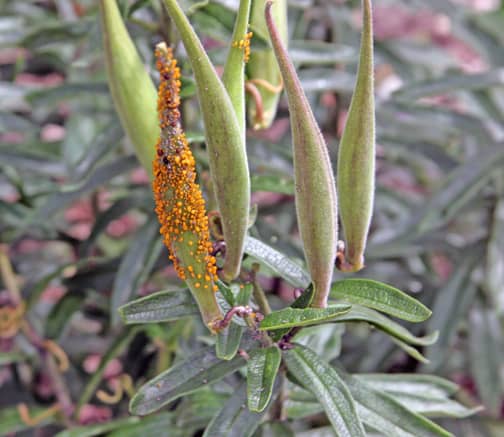Report From PIA – August 26
As I walked around Poison Ivy Acres with my camera this morning, I noticed that the Asclepias tuberosa is still covered with aphids. These orange Aphis nerii are sometimes called oleander aphids, but in my yard they are asclepias aphids through and through.
I grow four types of milkweed here, and I know for a fact that these aphids are on three of them. What am I doing about it? Other than watching other bugs that are feeding on these Aphis nerii, I’m doing nothing.
Like many insects and diseases in the landscape, these little aphids are very host-specific. I’m not worried that they’ll spread to my other plants. This is something I’m always reminding GardenLine listeners because their natural reaction is to want to “spray something before it spreads.”
As I write this tonight I’m tired, and feeling a bit discouraged about all I didn’t get done today. I recognize this as a “host-specific” situation as well: it’s easier to feel unhappy and pessimistic at the end of the day when the body and brain are weary.
Some situations need to be addressed and remedied as quickly as possible. Others, however, are associated with particular situations, and once we know the circumstances that cause the problem, we can better know if we should treat or leave well enough alone.

Aphids are one of the easiest insects to get rid of. I could spray these with insecticidal soap, a hard jet of water from the hose, or squash them with my bare fingers. But why bother? They are only on the asclepias seed pods, and I do see other insects feeding on them. In the grand scheme of things, these aphids aren't a problem.

